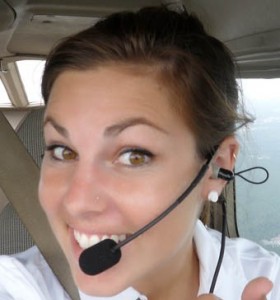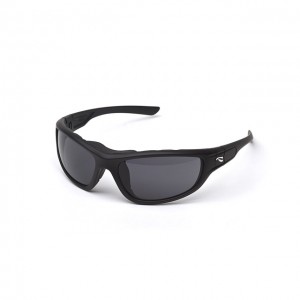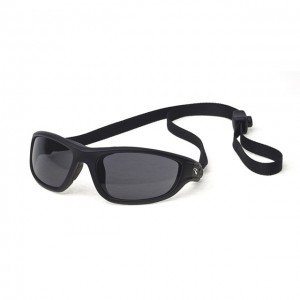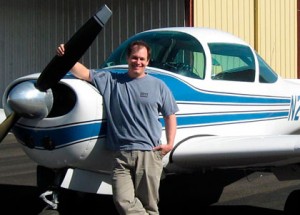I don’t know what is it about pilots and sunglasses, but we seem to be obsessed with them. No matter how many pairs we’ve got, it’s never enough. I myself have got a half-dozen sets of shades floating around in my car, flight bag, office, and elsewhere. Ray Bans, Vedalo HDs, even a few cheapies bought in a pinch at a random gas station.
Yet, like a moth to a flame, I never fail to check out what other pilots are wearing. I’ll read reviews and browse shop windows when I see Revos, Oakleys, Maui Jims, or Ecos peering back at me through the glass. There’s just something about sunglasses…
And yet they seem to be a constant disappointment in the cockpit. Maui Jim sunglasses are all polarized. Oakleys are too thick for the headset seal. Even the Vedalos, which are specifically made for pilots, seem to fall short because not only are they somewhat fragile, but the design I fell in love with are hinge-free and do not fold up so there’s no way to clip them onto shirt or store them in a jacket pocket.
So the search continues for the Perfect Pair. I was just thinking about that the other day when friend and fellow pilot Dean Siracusa emailed me to announce he was starting up a new company called Flying Eyes which (wait for it) manufactures sunglasses specifically designed for aviators.
I’ve known Dean for a long time; he’s quite the renaissance man. From owning the world’s largest stock transportation photography agency to directing TV commercials for major auto companies to running the infamously temporary airport at Burning Man, he’s been just about everywhere. One of Dean’s biggest pet peeves about flying was the way sunglasses would dig into the side of his head under the clamping pressure of a headset. Who hasn’t felt the wonderful sensation of a vice-induced headache or been frustrated by the ANR disturbances and increased noise allowed past the headset seal by the temples on a pair of otherwise lovely sunglasses?

It’s interesting to see how various people solve this issue. My own personal answer has been to tackle it from the headset side. I’ve been using the Clarity Aloft headset for years and love it. It’s the only aviation headset I’ve seen that works in every single aircraft. It looks perfectly at home on the flight deck of the Gulfstream, yet has sufficient passive noise attenuation and low enough mass that I can wear it during strong negative-G aerobatics without it flying off. It has no traditional head band, so it can be worn with any type of hat — perfect for flights in RVs and other glass canopy style aircraft. It’s light and compact, so it stores easily when not in use. And finally, it’s relatively inexpensive.
Nonetheless, there are people who don’t like having foam earbuds in their ear canals for hour after hour. The Clarity is also a pain to put on and take off because the earpieces take time to expand and create a good seal, so a perfect pair of sunglasses would still be a welcome addition to my collection.

I also thought about how many different types of airplanes I fly and figured I’d be a good guinea pig, so I told Dean I’d like to try a pair. And low & behold, they actually work! The Flying Eyes sunglasses are reminiscent of the Oakley Hijinx, but without polarization. The lenses are high quality, neutral density, anti-UV, and have most of the other standard features you’ll find on a pair of quality sunglasses.
What sets Flying Eyes apart from competitors is the temples. That’s what causes the headset interference and headache in the first place, so it’s a logical place upon which to focus. In fact, I’m surprised nobody’s tried this before now. Dean came up with a system whereby the temples are detachable. They can be replaced with a thin strap which provides no barrier to the ear seals found on a traditional headset.

The difference in ANR performance with “active” headsets can be dramatic. For years I’ve had trouble using the trusty Bose X in just about any DiamondStar while wearing sunglasses because something about that airplane just doesn’t play well with the Bose’s circuitry. But when wearing Flying Eyes sunglasses, not only is the passive attenuation improved but the ANR cutouts are eliminated.
I also like the way the rubber nose piece is molded into the frame. This not only provides a wide bridge to distribute the weight of the glasses, but also eliminates the snagging, bending, and lost/broken parts issues I’ve had with the Vedalo HD and other such products. In theory, a quality pair of sunglasses would be kept in a solid case when not in use… but how many of us actually do that? In the real world, sunglasses take a considerable amount of abuse and while I haven’t owned them long enough to comment on the scratch-resistance of the lenses, the Flying Eyes seem to be built to withstand the punishment.
Speaking of lenses, all the comfort in the world is worthless if the optical portion of the glasses don’t perform, but the Flying Eyes design passed that test as well. In fact of all the sunglasses I own, this pair provided a better seal around the eye area than any other, blocking out most of the harsh light that often creeps around the edges of other glasses when the sun is off to the side or behind the wearer.

I ran into Dean a couple of weeks later at the AOPA Summit in Palm Springs. He and his wife had a nice booth set up right next to their freshly overhauled ’66 Meyers 200D (a worthy subject for a future post). From what I could see, they seemed to be doing great business and generating substantial interest in their new product. I wish them well and look forward to telling people I was one of the first to discover these “convertible” gems.
